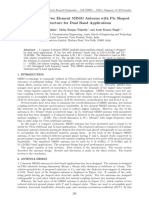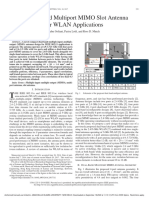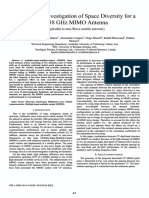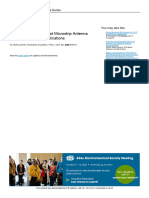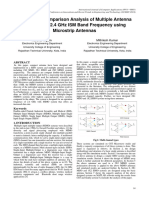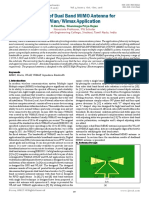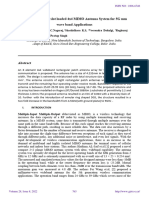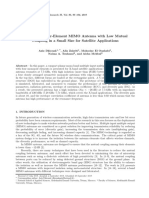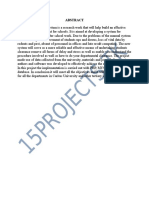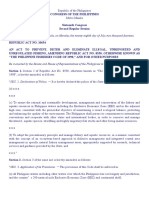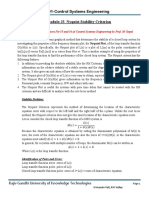0% found this document useful (0 votes)
15 views12 pagesAntenna Report
This mini project report details the design and analysis of a Half Ground Dual Band MIMO Antenna intended for wireless communication applications at 2.4 GHz and 5 GHz. The antenna employs a compact microstrip patch design with a half ground plane to enhance performance while minimizing size, achieving high isolation and good impedance matching. Simulation results indicate successful dual-band operation and acceptable gain, making it suitable for modern wireless devices.
Uploaded by
sohambangar12Copyright
© © All Rights Reserved
We take content rights seriously. If you suspect this is your content, claim it here.
Available Formats
Download as PDF, TXT or read online on Scribd
0% found this document useful (0 votes)
15 views12 pagesAntenna Report
This mini project report details the design and analysis of a Half Ground Dual Band MIMO Antenna intended for wireless communication applications at 2.4 GHz and 5 GHz. The antenna employs a compact microstrip patch design with a half ground plane to enhance performance while minimizing size, achieving high isolation and good impedance matching. Simulation results indicate successful dual-band operation and acceptable gain, making it suitable for modern wireless devices.
Uploaded by
sohambangar12Copyright
© © All Rights Reserved
We take content rights seriously. If you suspect this is your content, claim it here.
Available Formats
Download as PDF, TXT or read online on Scribd
/ 12



